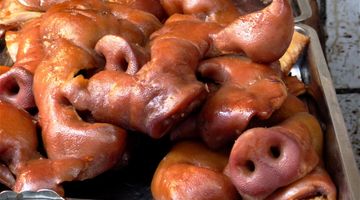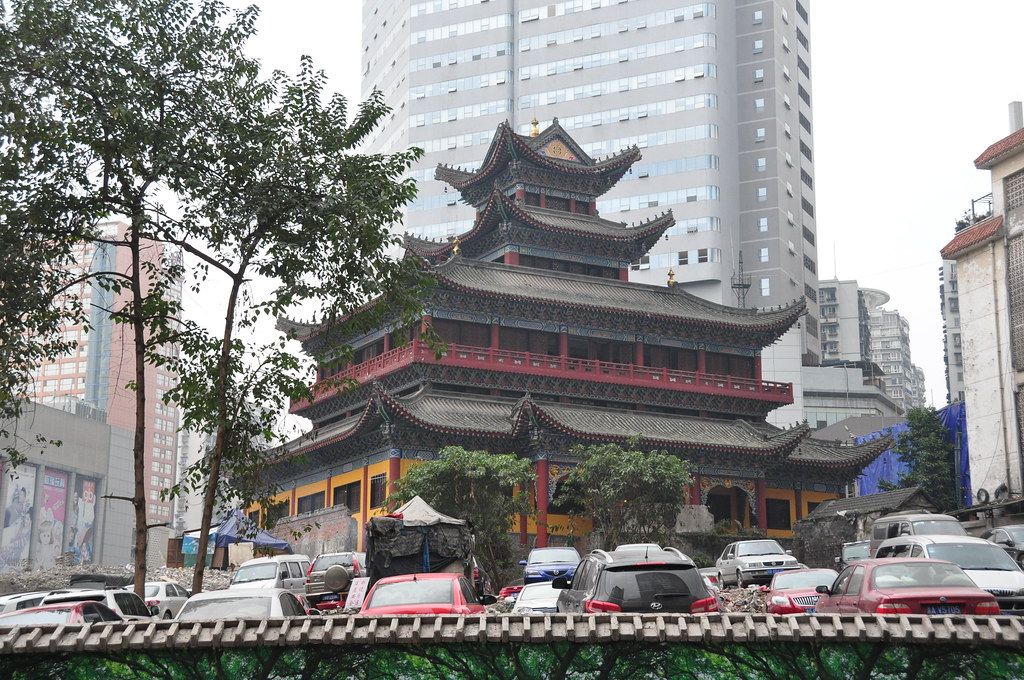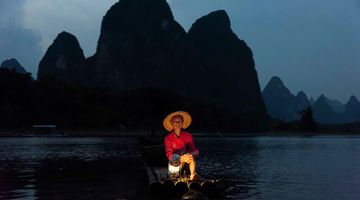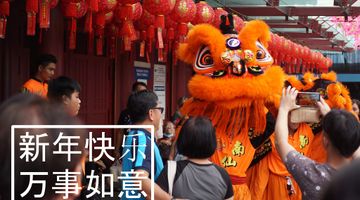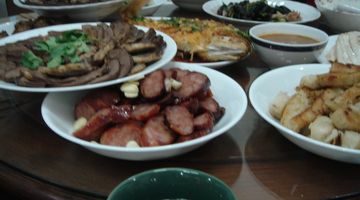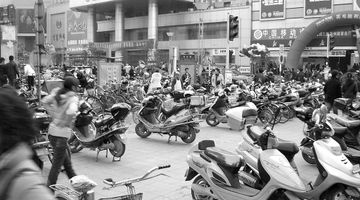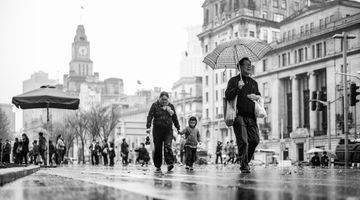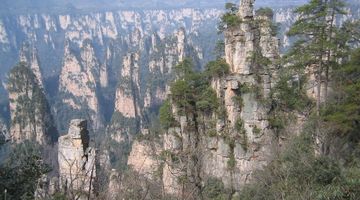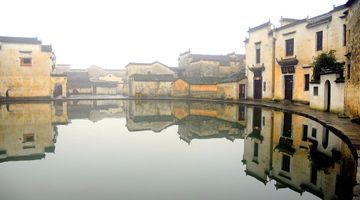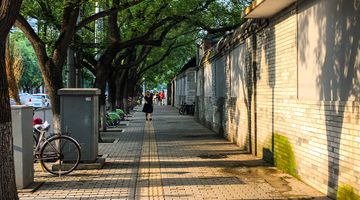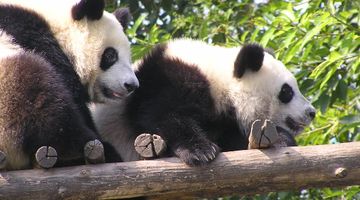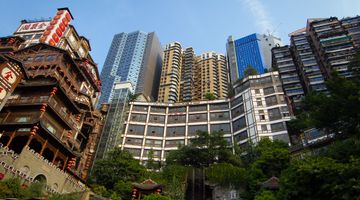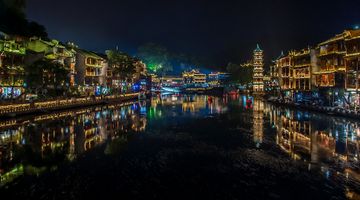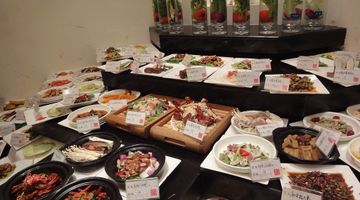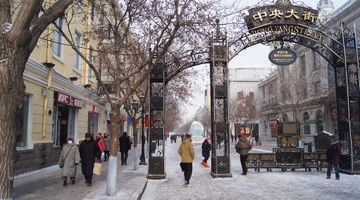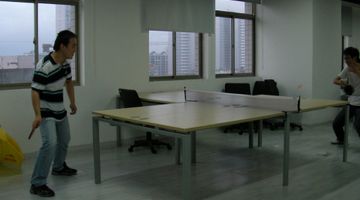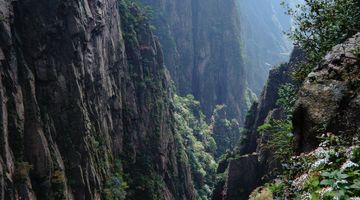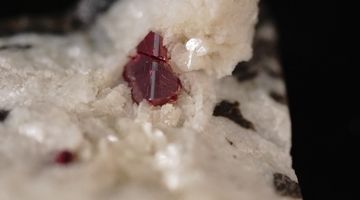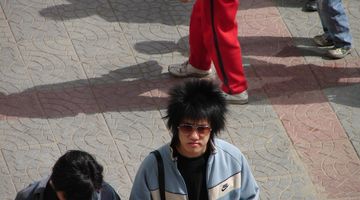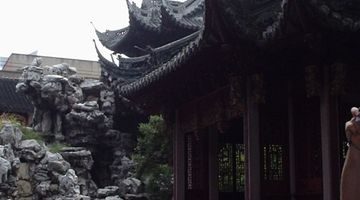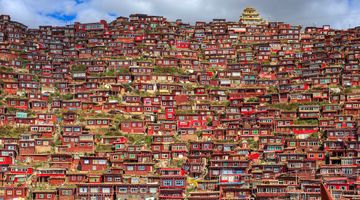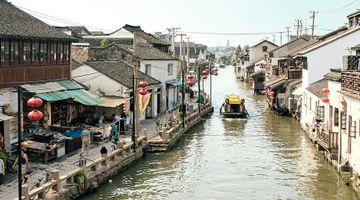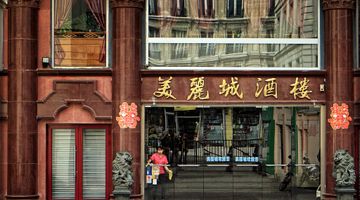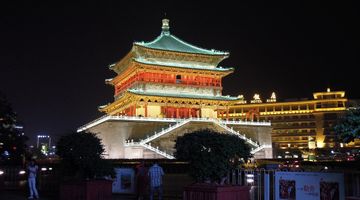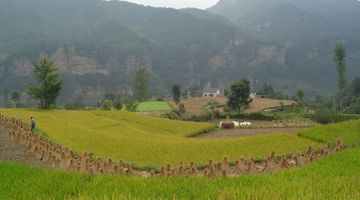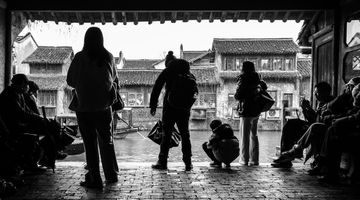Chongqing China – Top-10 Tourist Attractions and Activities
At first, Chongqing does appear to be a city that is a little unappealing with little in the way of attractions or things to do to attract the tourist, but if you look a little deeper into this city you will find plenty of places to visit in this lively city in western China.
Chongqing is one of the top travel destinations in western China, read on to discover what the top ten tourist attractions in Chongqing are.
1. Ciqikou
Ciqikou is like stepping back into the past, it is one of the top tourist attractions in Chongqing with a history of over 1700 years. Many of the buildings in the narrow streets and alleyways were built during the Ming and Qing Dynasties, so some of them have stood since the 14th century. It is 14 km to the west of the city centre and easily reached by bus or metro line 1 to Ciqikou station.
The area was important as a centre for producing porcelain, there have been twenty sites of old kilns discovered there and the name when translated means Porcelain Village. It was also an important trading post on the Jialing River and the 12 major lanes of the village head directly onto the river. In addition to the shops selling a variety of local crafts there is also some good tea shops and restaurants. It is free to enter and walk around and most stores are open until 10pm, a few attractions such as the Baolun Temple and Zhong’s Compound charge a small entrance fee of CNY5.
2. General Stilwell and the Three Gorges Museum’s
Chongqing has several museums; here are two museums that are interesting places to include on your visit to the city.
The General Stilwell Museum is in Yuzhong district and was founded in memory of the American General who was stationed in the city for a period of the Second World War. The museum is housed in his former residence with furniture displayed as it would have been at that time. There is also a collection of four military vehicles that were said to have been used by the American military during their operations in China at that time.
To reach the museum you should take metro line 1 to Eling station or line 2 to Fotuguan station. The entrance fee is CNY15; it is open daily from 9am until 5pm. It closes each year during January and February for an annual renovation.
The Three Gorges Museum is also known as Chongqing Museum. It has the largest collection of cultural relics from the Chongqing and Three Gorges areas. Among the attraction are large scale reliefs, sculptures and a one kilometer in length ecological corridor. Altogether there are more than 180000 exhibits displayed throughout the museum including chinaware, jade, ancient coins and products made of silk.
The displays include the history of the region dating from the Stone Age through to the challenges faced in the city today. There is also an interesting display of the wartime ordeals faced by the people of Chongqing during the war against Japan from 1937 until 1945.
To reach this museum take the metro line 2 to Zengjiayan station or tourist bus 480 to the museum entrance. There is free entry to the museum but it is limited to 5000 visitors each day, it is open daily from 9am until 5pm. There is a free showing of a movie at 10.30am, 2.30pm and 3.30pm in the cinema and you are advised to be seated ten minutes before the scheduled start time. There is a guige service which costs CNY100-200 for each group and lasts 60-90 minutes or you can hire an audio guide for CNY10, leaving a returnable deposit of CNY300.
3. Chaotianmen Dock and cruises on the Three Gorges
The Chaotianmen Dock is one of Chongqing’s major transportation hubs at the confluence of the rivers Yangtze and Jialing. It is a very busy and one of the must see attractions of Chongqing. Chaotianmen was originally built in 314BC as a gateway into the city, at that time the city’s emperor was considered to be the son of heaven, Chaotianmen means “towards the heaven gate.”
Chaotianmen is the largest dock in the city and one of the busiest on the Yangtze River, from here you can see cruise ships leaving to go along the Three Gorges, city sightseeing boats and ferries as they all depart from this point. Chaotianmen Square above the dock is the best place to observe all the activity on the river particularly at night when both banks are illuminated. To get there the easiest way is on the metro, take line 1 to Xiaoshizi station; it is then a short walk.
One of the highlights of any tours to Chongqing has to include a cruise on the Yangtze River and enjoy the stunning scenery that surrounds you as you travel along the Three Gorges. You could take a 3 or 4 day cruise to the Three Gorges Dam and end your tour at Yichang, an exciting alternative to this is to travel from Chongqing all the way along the river to Shanghai, it takes 12 days and really is the holiday of a lifetime.
4. Chongqing Zoo
Chongqing Zoo is located at Yangjiaping in the Jiulongpo district of Chongqing km from the city centre. It first opened to the public in 1955 and as well as being an attractive location for tourists to visit it is also an important centre for the protection and preservation of wild animals. There are over 4200 animals in the zoo representing more than 240 species. The zoo is spread over a large area, there is a lot of walking and some hills, it is in my opinion one of the best zoos I have seen in China. It houses some rare animals including the South China Tiger, the Golden Cat, the Clouded Leopard and the Asian Elephant. There is also an amusement park to keep the kids entertained and a science area where they can learn about the animals they have seen.
You can visit the zoo by taking the metro line 2 to the Dongwuyuan (zoo) station, the entrance is just a short walk from there. From February until August and during October the entry fee is CNY30, the rest of the year it costs CNY20. It is open daily from 7am until 6pm.
5. Hongya Cave
Hongya Cave also known as Hongyadong was used as a military fortress during the ancient Ba State that existed from 1046-256BC and during the Ming and Qing Dynasties it was used as a pier. The site now houses a large stilt house built along the steep sided cliff banking onto the Jialing River. It houses a site for visitors to experience the Bayu culture. The Bayu are one of the minority groups of ethnic Chinese, in addition to their culture you can also sample some of their food as you gaze out over the river, it truly is a highlight of a trip to Chongqing.
The stilt house is 11 stories high with a height of 75 meters; it is so high that the 1st and 11th floors have entrances from two different roads. There is an elevator to ease climbing up so many floors with bars, restaurants and cafes situated on different levels. The 2nd floor has several bars with a traditional appearance but modern fittings. The 4th floor is home to several traditional restaurants where you can buy local foods specific to this region. The 9th and 10th floors have a selection of foreign restaurants where you are able to choose from a choice of Japanese, Korean or Italian food. The 11th floor has coffee shops and fast food such as hamburgers. You can take the metro line 2 to Linjiangmen station or lines 1 and 6 to Xiaoshizi station and both are about 700 metres from the stilt house.
6. Jiefangbei Square and Shopping
Jiefangbei Square is located at the heart of the busiest shopping district in Chongqing; it is also known as the pedestrian street or Jiefangbei CBD and includes several pedestrian streets where tourists can mingle with locals as they shop in the first pedestrian shopping area to have been built in western China. It was first built in 1997, and then expanded in 2000 and 2001. There are several shopping malls centered on this area including Time Square and Metropolitan Plaza. In addition to shopping it is also a great place for eating as well as a good selection of hotels to suit all budgets. You can use the metro line 1 to Jiaochangkou station, lines 1 and 6 to Xiaoshizi station or line 2 to Linjiangmen station, all are close to this area.
7. People’s Liberation Monument
The People’s Liberation Monument is at the centre of Jiefangbei Square, the People’s Liberation Monument is locally known as Jiefangbei. It is the only monument in China that commemorates the Chinese victory over the Japanese in the Sino-Japanese War. When it was originally built in 1940 it was known as the Spiritual Fortress but this monument was destroyed in an air raid on the city so in 1946 it was replaced by a structure known as the Monument of Victory. In 1949 its name was changed to the current one to commemorate the courage of the People’s Liberation Army. When it was first built it was the tallest structure in this part of the city at 27.5 metres high, now it is dwarfed by several buildings. You should follow the same directions as above to view this monument.
8. Caiyunba Escalator
The Caiyunba Escalator is reported to be the longest escalator in Asia and is a vital link between the Chongqing Railway station and the Lianglukou Metro Station. The metro station is at a much higher location than the railway station and the alternative is several hundred steps up a steep hill. This elevator has saved me struggling up those steps many times and the CNY2 fee to travel up (or down) is happily paid by this often weary traveler.
9. Liziba Park
The Liziba Park is located in Yuzhong district between the metro stations of Fotuguan and Liziba on line 2 and close to the Stilwell Museum. It is on the banks of the Jialing River and houses several original and refurbished buildings from the time when Chongqing was briefly the wartime capital of China. The park is home to banks, government offices and private residences. There are also some military pillboxes that have been carefully preserved. It is a free attraction open daily from 8am until 6pm.
10. Zhazidong Prison
This is one of the two prisons that were located in Shapingba, the other is Bai Gong Guan. They are located at the base of Gele Mountain and a shuttle bus will take you there for CNY20. Another shuttle bus operates from the prison site to Ciqikou for CNY10. Visiting this prison gives an accurate insight into the harsh prison conditions of 1940’s China and the horrors of a massacre that occurred here in 1949 when 300 prisoners were killed at the end of the Chinese civil war. There is free entry to this largely unknown attraction.
Conclusion
The best time for a visit to Chongqing is from late February until early in May. The winter is mostly dry, snow is very rare but it can be cold. The summer months can be unbearably hot and humid with temperatures sometimes reaching 40C. Chongqing, along with Wuhan and Nanjing are known as the furnace cities, it is best to avoid them in the summer months.
